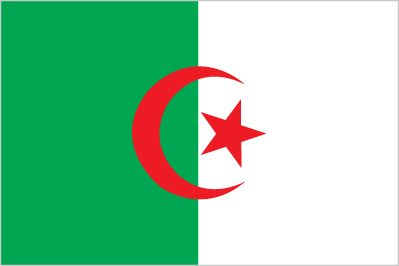
Algeria's economy remains dominated by the state, a legacy of the country's socialist postindependence development model. In recent years the Algerian Government has halted the privatization of state-owned industries and imposed restrictions on imports and foreign involvement in its economy. Hydrocarbons have long been the backbone of the economy, accounting for roughly 60% of budget revenues, 30% of GDP, and over 95% of export earnings. Algeria has the 10th-largest reserves of natural gas in the world and is the sixth-largest gas exporter. It ranks 16th in oil reserves. Strong revenues from hydrocarbon exports have brought Algeria relative macroeconomic stability, with foreign currency reserves approaching $200 billion and a large budget stabilization fund available for tapping. In addition, Algeria's external debt is extremely low at about 2% of GDP. However, Algeria has struggled to develop non-hydrocarbon industries because of heavy regulation and an emphasis on state-driven growth. The government's efforts have done little to reduce high youth unemployment rates or to address housing shortages. A wave of economic protests in February and March 2011 prompted the Algerian Government to offer more than $23 billion in public grants and retroactive salary and benefit increases, moves which continue to weigh on public finances. Long-term economic challenges include diversifying the economy away from its reliance on hydrocarbon exports, bolstering the private sector, attracting foreign investment, and providing adequate jobs for younger Algerians.
$284.7 billion (2013 est.)
country comparison to the world: 47
$276.2 billion (2012 est.)
$267.4 billion (2011 est.)
3.1% (2013 est.)
country comparison to the world: 111
3.3% (2012 est.)
2.6% (2011 est.)
$7,500 (2013 est.)
country comparison to the world: 138
$7,400 (2012 est.)
$7,300 (2011 est.)
agriculture: 9.4%
industry: 62.6%
services: 28% (2013 est.)
23% (2006 est.)
3.9% (2013 est.)
country comparison to the world: 132
8.9% (2012 est.)
11.15 million (2013 est.)
country comparison to the world: 48
agriculture: 14%
industry: 13.4%
construction and public works: 10% trade: 14.6%
government: 32% other: 16% (2003 est.)
10.3% (2013 est.)
country comparison to the world: 110 10.7% (2012 est.)
petroleum, natural gas, light industries, mining, electrical, petrochemical, food processing
2.5% (2013 est.)
country comparison to the world: 116